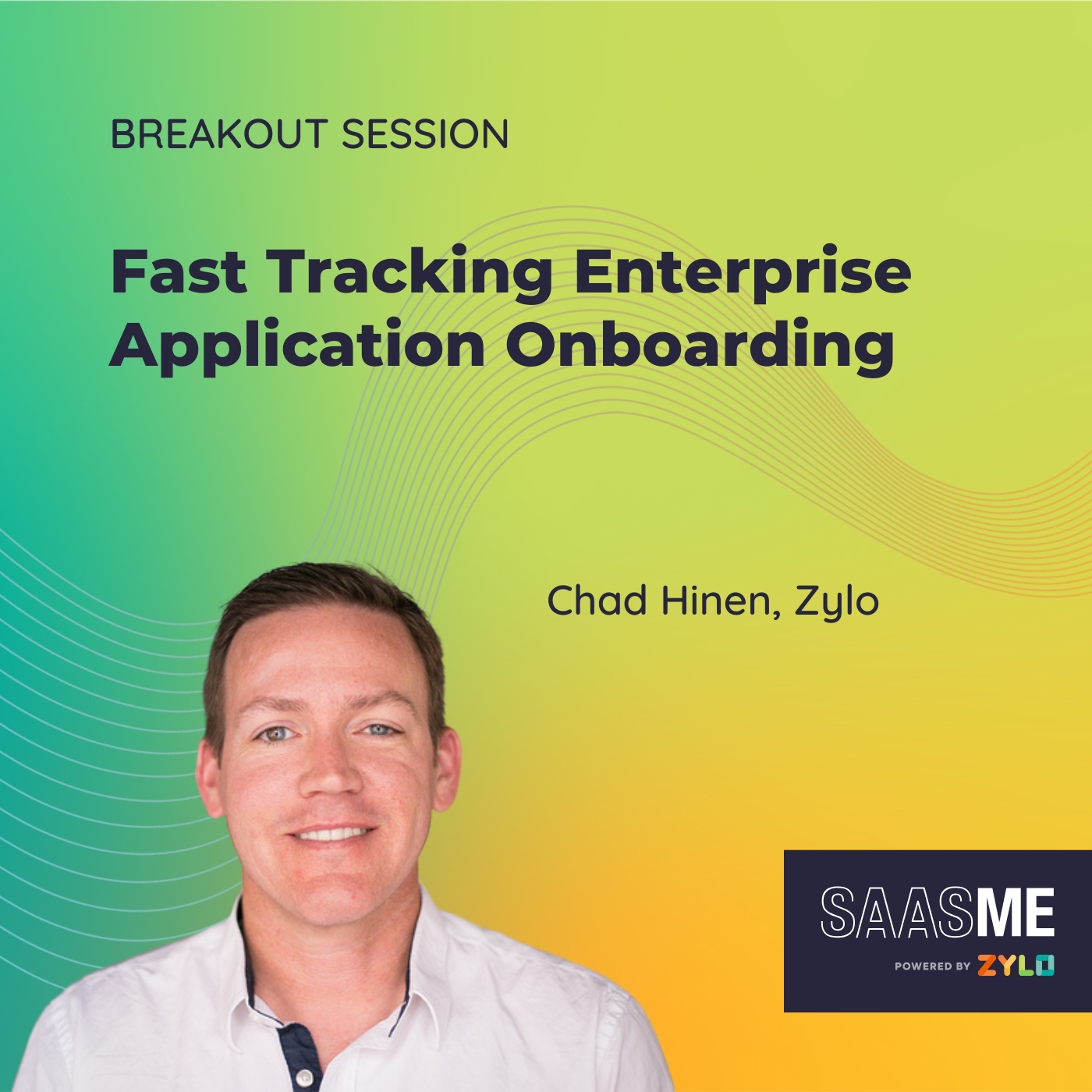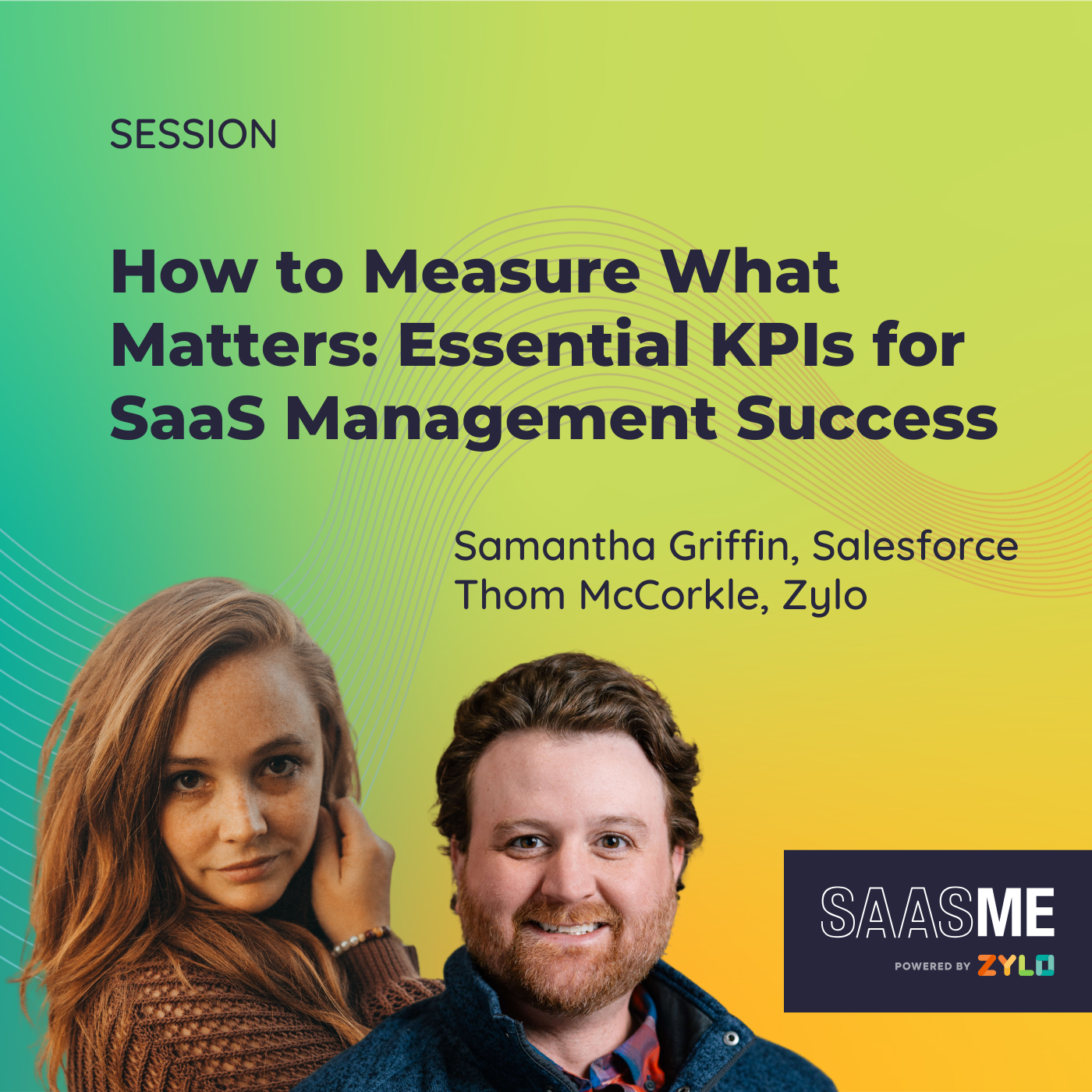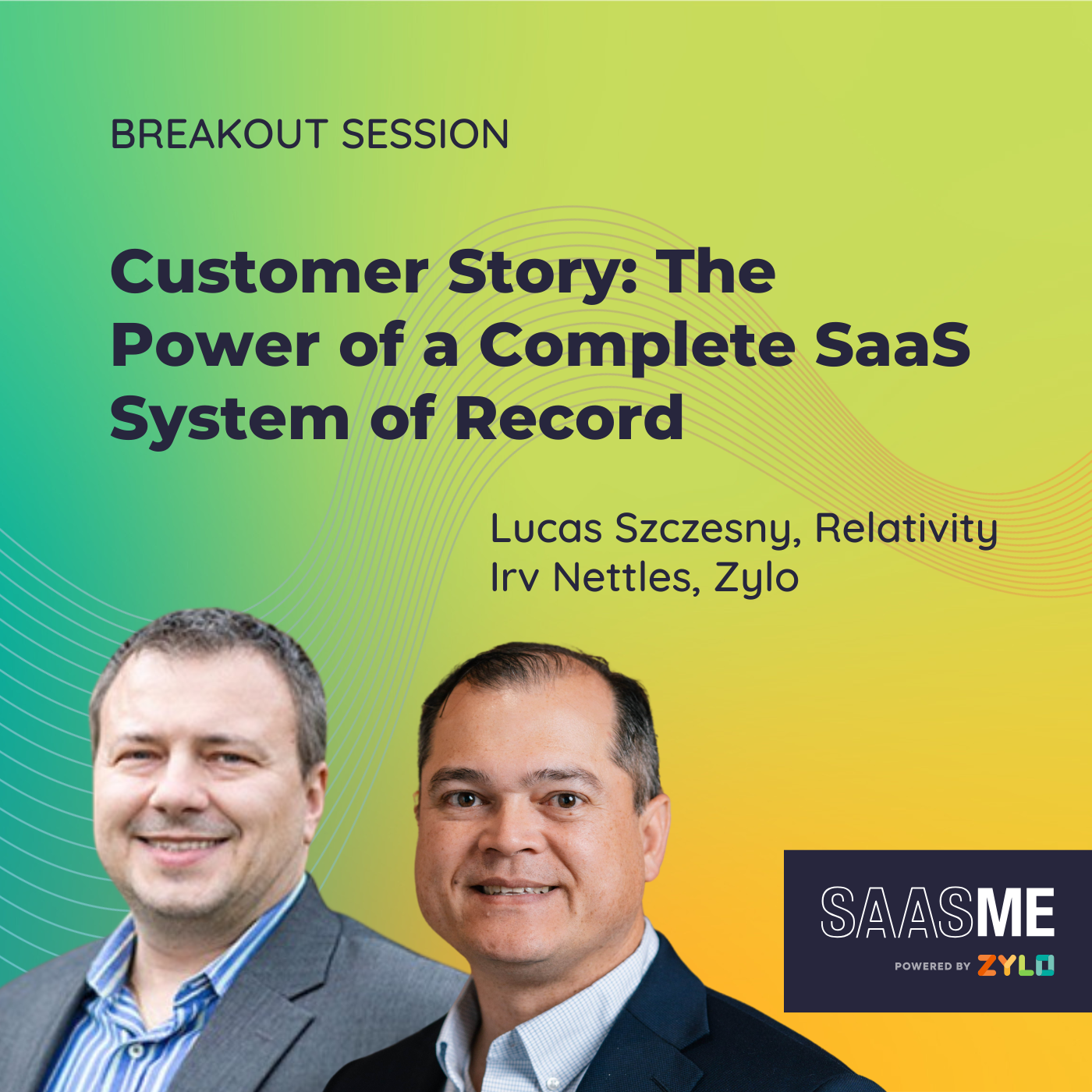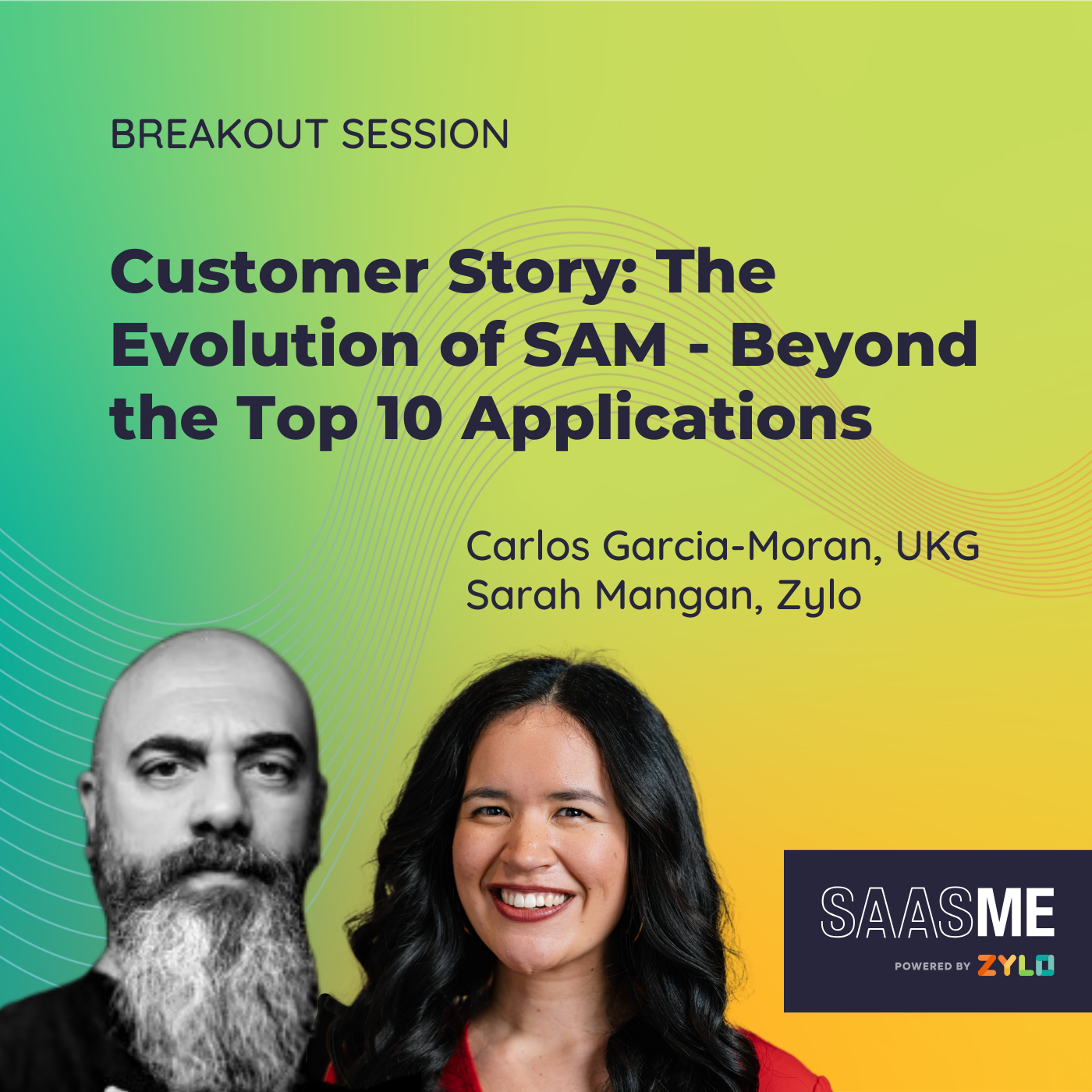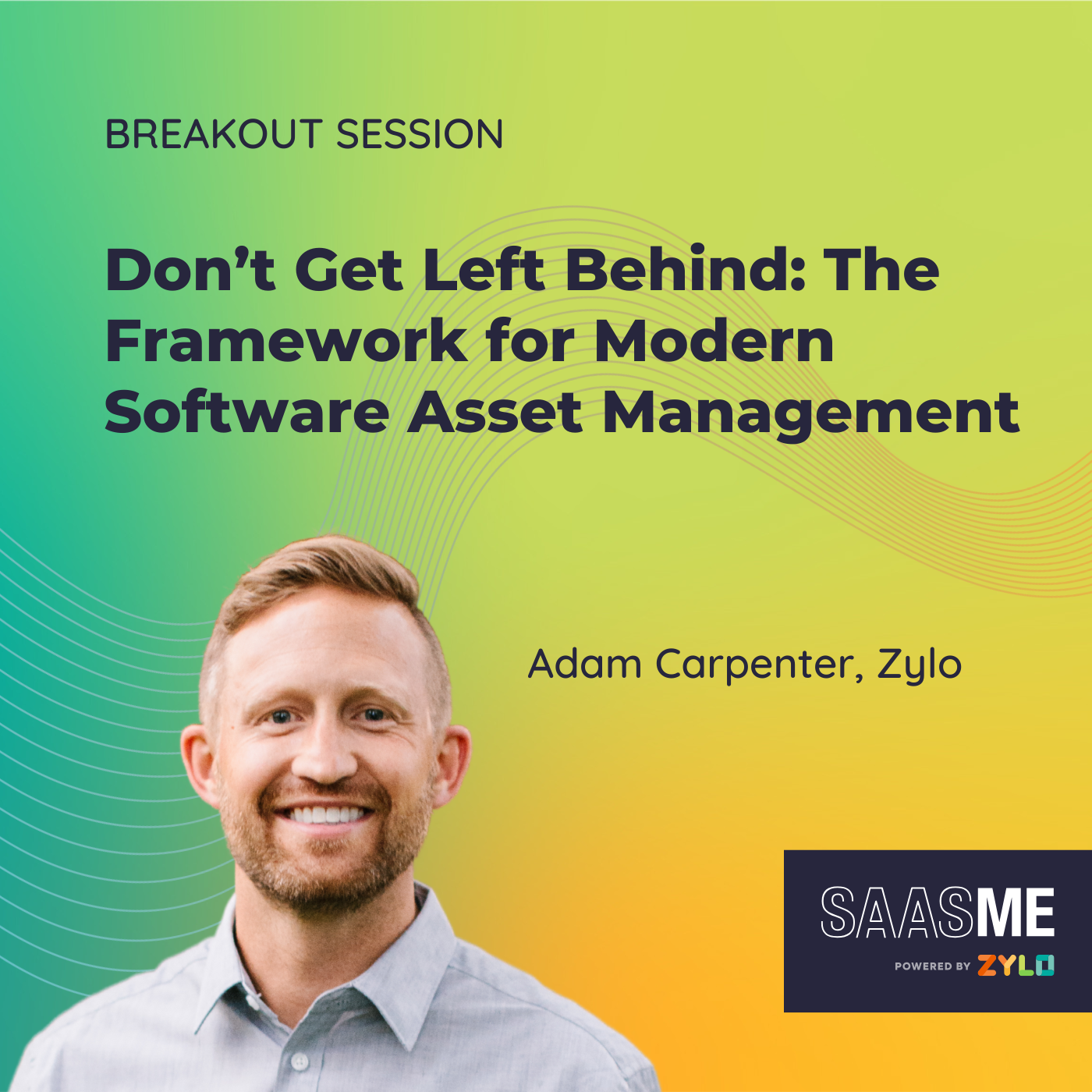Fast Tracking Enterprise Application Onboarding
- 0.5
- 1
- 1.25
- 1.5
- 1.75
- 2
Chad Hinen: Hello, everybody. Welcome to our breakout session for SaaS Meet 2025. Excited to talk to you today about fast tracking application onboarding, particularly at the enterprise level. The effects that has, the benefits that has, how we've seen that approach work in several organizations. Engaging with Zylo and rolling out their SaaS management program, often for the very first time. A little bit about myself, Chad Hinen, real quick. Senior director of implementations at Zylo. What that means is, I oversee the implementation team at Zylo, been here a little over eight years. I've had the good fortune to, from the beginning, be the leading member of the implementation team at Zylo. And be a part of in some capacity, every implementation that has happened at Zylo in our existence. And so, excited to talk with everyone today about some of the insights we've gleaned. How we've seen an approach like this really help customers effectively roll out their program, in a way that is going to drive impact, that is going to also lead to sustained success. So let's jump into some of the content today. And where we're going to start really is with... What's the challenge statement, what's the problem statement? What are the challenges here when it comes to getting started with SaaS management, as a whole? At the enterprise level, right? What is that framework then from a SaaS management point of view, the framework that allows us to drive success? That we've seen work as an effective approach, across particularly the enterprise level, though applicable at almost any size of organization as well. And then really get into what I would call the meat of the discussion today. And the biggest takeaways is, in that focus on application onboarding, to the key steps to be able to take that approach. And more importantly, probably, or as importantly, what's the benefit? What are the business outcomes we've seen driven by using this approach? Customers taking that... What we're calling here, fast-track approach to application onboarding to be able to... Again, drive value, sustain the program long- term, and really be able to bring some buy- in into the program as a whole.
Chad Hinen: So what are those challenge statements? I think probably anyone here sitting in this session here has experienced one, if not all of these really sort of problem statements, or challenge statements, if you will. Some may come very specifically or uniquely to an organization, or again, you might experience all three. I think it's a very common experience for organizations. And the first really is even just understanding that SaaS management is, in fact, for most organizations a big initiative. This is no longer an afterthought, this is not a nice to have. This is important, this is a big initiative. It takes an important, mature and dedicated and focused approach, to be able to be successful. And most of the time that is going to start with visibility. And so many times, customers, even once they have that visibility into that sprawl of applications, " Wow, okay, now I know I have 200, 500, 1,400 subscriptions in my business. Now, I understand that. Now what, right? Now, where do I go from here? What do I do from here? How do I start to execute and successfully stand up the program?" And that's going to lead to certainly of the question of, " Where can I drive ROI from the program? I need to justify this program, I need to show the wins behind it, the return on the investment. The things that are going to get me buy- in at the executive level, and allow me to continue to invest in this program, and also make impact across the entire business." And so if we now put that in the context of the SaaS management framework, again, particularly applicable at the enterprise level, but not exclusive to that. We have our disciplines here, through the top of our pyramid, right? And underneath everything, certainly I think we would all understand and agree, a key foundation here, is those KPIs. Those metrics that are going to allow us to show what our successes, what are the important things that we're measuring, that align to the success and the outcomes that we have. And those are driven by capabilities and tactics. Those are the kind of things that we're going to talk about here in a little more detail today. Now, the capabilities being, what are those functional activities that need to happen and be performed across all those areas of disciplines? Those are those things that are core to execution, and aligned to particular functional activities that are going to be happening. Whereas the tactics here, think, " What are those operational things that I'm needing to put in place? What are the operational rhythms? What are the plays?" Whatever you want to call it, those tactics that I have driving my strategy driven by my overall outcomes, but the strategy that I'm going to execute in a repeatable way, in an operational way, to really drive the most success possible. So as you think about these capabilities, they really can be broken down by discipline. And the key disciplines here is asset management, being, inventory management, license management, renewal management, in the capabilities falling underneath those disciplines, right? And we're going to spend a big chunk of our time focusing on this first piece here of inventory management. And it comes to building that system of record that's going to allow you to perform things like app rationalization, and management, and understanding risk. We're going to focus there. That's what's going to allow us to really build out our capabilities around implementation, around inventory management, excuse me. But you're also going to see the other elements here and the other disciplines, where the benefit's going to come from taking this approach. Putting together an approach that's going to prioritize application onboarding. And a focus behind that approach, is going to be key to driving that success. Now, across all of these capabilities and in all these disciplines, you're of course, you're always going to have an approach, which we'll touch on a little bit here around our starting point. We're learning to crawl, we're getting going, we're getting more mature, going up that maturity model to being able to walk. And really kind of put some rigor behind what we're doing, and drive a lot more success to fully being out and running. And really being an exceptional and mature program that is critical to our business operations.
Chad Hinen: And so this is where, a lot happening here, right? But if we can work our way across the screen, and think about this from starting with the objectives, and I do want to focus there for a second, because it can become... When you're actually in the day- to- day of the program, something that can become very quickly overlooked, which is, " Why are we here," right? We're not here because we want a system of record. We're not here because I want an application catalog, or I want to see shadow IT. You're here to reach an objective, and to drive an objective. And if that can be measurable and time- bound, all the better. But when we think about this, what would your executives, what would the CIO, CFO, CEO, if they came in, and wanted to understand, " Why are we deploying SaaS management? Why is that important to our business?" That is the objective, right? Is it an overall savings reduction? Is it a risk reduction factor? Whatever it might be, something measurable, something even time- bound is great, but that is going to be what drives the execution of everything else that we're doing. That objective is going to be fed by those outcomes. Again, we're going to spend most of our time thinking, talking through inventory, creating that visibility, not just creating the inventory, but the insights that are a part of it, right? Critical. We need to know what to do with that information once I have it. From a tactics perspective, where that's going to break down is, we're going to want to create that system of record, we're going to do that in a few different ways. Talk about it here in a second. There's those initial phases. We're going to take a prioritized approach within that, and that's what's going to allow us to drive a lot of, again, early success, overall strategy. Build out the reps that are going to allow this program to grow and mature, and drive a ton of value within our business.
Chad Hinen: This is where application onboarding enters the picture, right? Enters the chat, if you will. I'm a little old, that might be an old term now, but bear with me on that. So what are we talking about in that case? And again, one little further bit of context here, when we think about our capabilities within that discipline of inventory management, we talk about system of record. Everyone wants to start within creating that system of record, and creating that inventory, right? That's a very natural starting place, and some of these things are quite obvious. People come in and understand, " Of course, I want to get my financial connections in place. I want to discover all those applications. I get it. I need to be able to identify where those opportunities are." Great. An overlooked element of this is application onboarding. And you see here, in our sort of far right crawl phase, or far left, excuse me. Thinking about this phase one, as priority applications, we're going to talk about that in detail in a second. But the one thing I'd ask you to take away from this slide that has a lot of important information on it is, let's not overlook that phase. It's a critical piece of our crawl phase in particular, to be able to drive success. And so let's get into that a little bit better. And that starts with proper scoping. And so phase one of your project, and this does not mean that you're starting brand new with this for the first time, you may just be resetting. We need to relook at how we've deployed our systems, how we're doing SaaS management. Let's do a level set. Or it might be the very first time you're rolling out such a program, or an application or a platform behind that program. But having that scope, that proper scope, is what's going to allow you to drive early outcomes and drive early value. That starts with, of course, I've said it a few times, let's create that inventory. We need to know that historical snapshot is a point in time to know what do we have in our landscape, and how it's being bought. Who's buying it, what it does? We need to be comfortable with that data, and we need to have a process in place to automatically be refreshing that data, ongoing basis. So it's staying of course, up to speed, live, if you will, real time. Then that second piece, onboard priority applications. Let's talk a little bit more in the next slide about what that actually means. But what we want to do is identify the priority applications, and take the steps to get the information we need in place, to be able to fully manage the lifecycle of that, and drive some success. We'll talk about some of those data points back here in a second. And then our value exercises, right? Thinking about particularly on those priority applications, we'll talk about here in a second. Where can I start to drive value? This is not something that needs to wait, this is not something that needs to... We need to complete all elements of standing up a mature program, before we even think about driving value. No. The way you're going to get to value more quickly, is to think about that during this initial phase, even when you're focused on, what we're going to call priority applications.
Chad Hinen: Okay. Step one to that progress then is, let's prioritize the applications. Let's determine what those applications are that we're going to prioritize. Now, these are applications that are typically generally high- value, and they're owned or influenced by the team that is standing up the SaaS management program. What that mean is, you have influence on those applications. You can control them, right? You can make decisions on those applications early. You don't have to go out and get some buy- in from a team that's not tied to the rollout of this program, to be able to drive some value and some ROI. The way that we can think about that, typically, is these projects are breaking down in high- level, a couple of different categories. They could be IT- led, if they're IT- led. In that case, we're usually focusing on what are the applications that IT owns, right? This is those centrally owned application. You might call them IT-owned, you might call them tier one, you might call them managed apps. These are the applications you can control and influence from an IT perspective. Also, might be lumped into this is those birthright, provisioned to all employees, enterprise- wide applications. Another great way to consider another consideration here, and think about your office suite, right? Your collaboration apps, things like that. If it's a non- IT- led project, you may not own a lot of these applications, and so your approach might be a little bit different. And in those cases, thinking about where you can make the most impact... A, the highest amount of impact, and B, in the fastest way. And that's going to usually come down to, for those high- spend or high- value subscriptions in your business, probably pretty obvious for most folks, they're pretty straightforward. But also critically, if you want to think about what those applications you can affect early in the program, they're the ones that are coming up for renewal, right? That's the moment that I can take action, that is going to drive ROI, it's going to drive success, and it's going to show what the program is capable of. So identifying those applications that are coming up for renewal in the next 90 to 120 days, for example. It's a tremendous starting place, and you may also consider other business- critical apps that everyone understands are essential to operations, and everyone understands our opportunities for impact. So those are a couple of different ways, whether it's an IT- led approach, not necessarily led by IT, that we've worked with customers to determine what those priority applications are going to be for them. From there, onboard those apps. Wow, sounds super exciting. Let me just tell you, it's going to drive success here within your program. If you take the approach of understanding, " I need to get this data for these applications into my system of record." It doesn't sound like the most glamorous thing in the world you could do, but what's going to do, is allow you to have the impact and allow you to do so quickly, like I said. What does that mean, what data do I need to have? Certainly spend, and need to understand what's being spent, not only on that specific subscription, but with that vendor holistically. What is going through my annual invoice that I have? Is there anything else from a credit card perspective? Now, I'm managing Smartsheet centrally and I'm standing this up, and I have an annual invoice of$1.5 million a year, but, " Wow, I see there's actually credit card purchases happening on the subscription." Well, I'm going to pull this into this operation, and make sure we're managing this effectively. The order form, the current order form, what are my entitlements? How many licenses do I have? What are my amounts on those? What are the different license types? My renewal dates, and importantly, are there any notification periods I need to be aware of? Is there an auto renewal part of this? I need to be notifying, I'm working with the vendor 90 days ahead of time, 30, 60, whatever it might be, that I need to keep in mind. I need to have that information as part of the system of records, I need to be alerted to be able to be proactive about this approach here. Who are the owners? Who internally in the business, if it's outside of my group, right? In particular, that is the subscription owner or the budget owner, a technical admin? People are going to make decisions, and have influence on the future of this subscription, and how we manage it going forward. And then anything custom, right? Is there a custom piece of metadata around security approvals, around DPAs, around anything else that you might be tracking, that might not be part of this, our initial approach here of key areas of onboarding, and key data points. Adding anything else there that might be business critical to your organization, certainly is something we'd encourage as well. We want to track this, right? So from a priority perspective, once we have those applications onboard, here's just a quick sample snapshot in Zylo of a dashboard to track, " Okay, well, of all my application count, what are those apps that I have prioritized? What's the spend, the annual spend on those applications, and those subscriptions that I'm influencing early in the program's history?" What is that list? What is the health of the record in Zylo of those, right? And do I have those applications, quote, unquote, " onboarded"? I see the spend, I see the usage, I know when the agreements are coming up, and I can take action and influence those subscriptions. The outcomes here, bottom line is that focus approach is going to drive value. Starting with the applications that you control, that you influence, is what's going to allow you to drive ROI. You own, you influence these, you can make decisions, you're not going out to get buying- in from someone else, that might not be part of the early stages of your program. When you operationalize this on the apps you application own, you're building reps. You're stress testing your program, you're building the muscle, you're finding areas of where there might be weaknesses. You want to address what you're doing on applications you already own, and you're starting to do in our third bullet here, stack up those wins, right? Again, we're getting that ROI, or stacking up examples of wins. What that's going to do? The outcome there is going to allow us to create buy- in, and that buy- in's going to come in two forms. The first thing is that executive backing. We need the executive backing to get to continued investment, and support of the program. And those are the folks, those are our backers that are going to help us really drive action in the business. When it is time to go beyond our centrally owned applications, we may need executive backing to pull others into this action, to express why that big outcome we had at the beginning of the program, the big objective, this is a directive here? And it's going to also allow you to expand the program with other teams. If other teams in your business, your business partners can look at your success, see the wins you've racked up, you've stacked up. Know how you've put this in practice, they're going to be ready to buy into your program, and opt in to that program if you will, and become part of it, and be able to look at your success as a model, to do that. Let's talk about a couple of specific outcomes that have been driven with Zylo clients with visibility or how you even unlock? Versus Adobe, and the massive rationalization effort that they had, right? Going from 2, 600 applications to narrowing down and standardizing on 400 applications, a massive reduction in the landscape that needs to be managed achieving savings, right? It's not just around those efficiencies, but those efficiencies turning into cost savings, or cost avoidance from their programs, to the tune of 60 million plus. ModMed, their approach was all about license management. Starting with those priority apps, but building out that system of record for all those applications, allowed them to reclaim over 2, 800 licenses, and drive a ton of cost avoidance in that regard there. And then, again, rightsizing licenses or canceling subscriptions at those renewal dates is what's allowed them to then drive over 1.5 million in cost savings. BlackLine, for them, it's all about security. They've been able to 4x their enablement of single sign- on, to be able to really control those users, as well as drive down expense spending. So the big takeaways, and that's where you hear, knowing what you have is just the start. It's a system of record, it's relevant, you need to keep that up- to- date, it needs to be actionable. Prioritize and onboard your most critical applications. This is what's going to allow you, if you have control over those, to drive action and drive value early. Driving that program value is our third takeaway, through that focus is what's going to allow you to expand the program, drive the most success possible. And that you can drive from the program that you're rolling out. Thanks, everybody. In closing here, is a couple of our starter guides we'd encourage you to check out, and think about. The Enterprise SaaS Management Framework, for a really valuable solution for our teams to be able to roll out here. Encourage you to scan QR codes here and check that out, as well as the six foundational steps to SaaS management. Thanks, everybody. Have a great day.
DESCRIPTION
Building a true SaaS system of record starts with centralized data. Who is the application owner? Where is the contract? What’s the utilization? It sounds simple… until the sheer volume of new applications becomes overwhelming, with each app needing to be onboarded the same way. Join this session for a practical, step-by-step plan to accelerate application onboarding and unlock value faster than ever.
Speakers:
- Chad Hinen, Senior Director, Implementation at Zylo
Today's Guests


